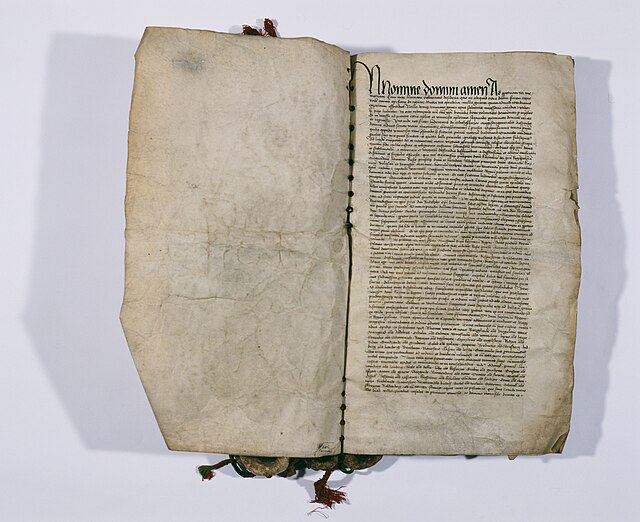State of the Teutonic Order
The State of the Teutonic Order was a theocratic state, located along the southeastern shore of the Baltic Sea in northern Europe. It was formed by the knights of the Teutonic Order during the early 13th century Northern Crusades in the region of Prussia. In 1237, the Livonian Brothers of the Sword merged with the Teutonic Order of Prussia and became known as its branch — the Livonian Order. At its greatest territorial extent during the early 15th century, the State encompassed Chełmno Land, Courland, Gotland, Livonia, Estonia, Neumark, Pomerelia, Prussia and Samogitia.
The Battle of Grunwald (1410) marked the start of decline of the State of the Teutonic Order (19th-century painting by Jan Matejko)
The Polish–Teutonic peace treaty of 1466 made the Teutonic state a fief of the Kingdom of Poland
The Prussian Homage of 1525 established Ducal Prussia as a vassal duchy of the Kingdom of Poland, in place of the State of the Teutonic Order
The Baltic Sea is an arm of the Atlantic Ocean that is enclosed by Denmark, Estonia, Finland, Germany, Latvia, Lithuania, Poland, Russia, Sweden, and the North and Central European Plain.
Hel Peninsula
Cape Arkona on the island of Rügen in Germany, was a sacred site of the Rani tribe before Christianization.
The naval Battle of the Sound took place on 8 November 1658 during the Dano-Swedish War.
Nautical chart of the Baltic Sea in 1919.







